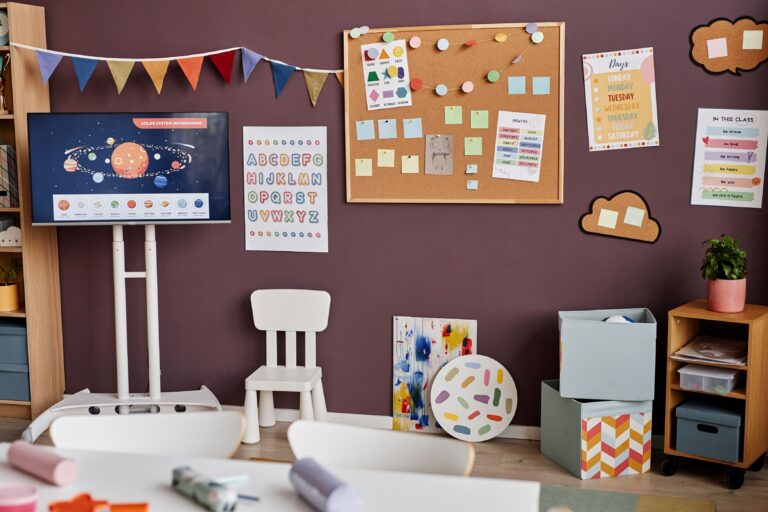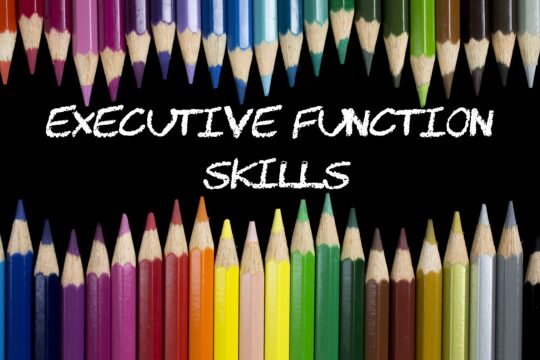Focus walls have emerged as an effective tool in , and for good reason. They provide a vibrant visual representation that can capture the student’s attention and deepen their understanding of the material. They serve as both an anchor and a reference point for students, offering an interactive and engaging learning experience. Here, we’ll examine the concept of focus walls and their impact on learning and explore some creative ideas for implementing them in your classroom.
What are Focus Walls?
Focus walls are dedicated spaces in the classroom where learning objectives, key concepts, important vocabulary, essential questions, or other relevant information are visually displayed. These displays are tailored to students’ learning, providing them with a visual reference point to refer to. It could be a cheat sheet, which students can use for quick reference or reminders that will help them recall information.
The Learning Potential of Focus Walls
Focus walls are more than just a decorated bulletin board on your classroom wall; they are a display that reinforces learning, making it easier for students to retain information. They visually map out specific concepts, goals, or themes, helping students connect the dots between what they’re learning in lessons and lectures and offering them a broader understanding.
��
Additionally, focus walls can cater to diverse , making them a great tool for many students. They support visual learners, auditory learners when linked to podcasts or videos, kinesthetic learners through hands-on interaction, and social learners through group activities and projects centered around the display.
How to Create a Focus Wall
Creating a focus wall involves a lot of planning and creativity. Here is a quick guide to help you create one of your own.
Define your objectives and choose a location
Think about what objective, concept, or theme you want to focus on or highlight. Younger students may benefit from sight words, weather, numbers, character traits, etc. Older students may benefit from skill development, , criteria, or highlight events or essential questions for specific themes. Next, you want to find a location in your classroom that is visible to all students. This space should be easily accessible and not interrupt other students if being used interactively.
Design your layout and gather materials
Design your layout by first creating a quick sketch of what you want it to look like. This is when you decide whether to make it interactive and cater to all learning styles. Next, you will gather your materials. This may include printing QR codes for auditory learners, gathering interactive elements like sticky notes and envelopes for kinesthetic learners, and including any printed visuals you want to include.
Create and assemble your focus wall
Using your materials create your focus wall. This is where you include definitions or images, state your objectives, pose thought-provoking questions, use charts or diagrams, or add interactive elements that students can move around. Arrange the content on the bulletin board, and keep your materials close by if you plan on updating the wall throughout the lesson or unit.
Introduce the focus wall and keep it up-to-date
Finally, explain the purpose of the focus wall and how students can use it. Encourage them to ask questions and make suggestions so they will get the most out of the learning experience. Be sure to maintain the wall and update it regularly if you plan to keep it relevant and engaging.
Creative Focus Wall Ideas
Being creative and thinking outside of the box is key to maximizing the impact of your classroom focus wall. Here are a few innovative ideas to help spark your imagination.
Make it interactive
Incorporate interactive elements that students can manipulate themselves to make it more hands-on. For example, post open-ended questions, provide a blank timeline that students can fill in, use Velcro to have students match terms with their definitions, or display a map where students can add flags or pins. You can also add quizzes or polls that are related to your content. Interactive focus walls make for a more active learning experience that can help deepen the learning process.
Incorporate technology
by incorporating digital elements into your focus wall. For example, QR codes or digital screens can link to additional resources or interactive content. Include apps that complement your objectives or multimedia elements, such as videos, sound clips, or interactive quizzes. You can also include augmented reality and bring images to life by linking to video explanations, or animated illustrations, making complex concepts more tangible for students. Integrating multimedia into your focus wall creates a more dynamic learning experience that caters to digital learners.����
Involve students
Create a focus wall with student-generated content. Use it to showcase student work or allow students to take turns as curators of the wall. Each week or month, assign different students or small groups to be in charge of the wall. This will encourage students to be creative, take ownership of their learning, boost their confidence, and connect more deeply to the content.
Beyond Decoration
Focus walls do more than just decorate your classroom. They act as a driving force to boost learning and engagement while fostering an immersive learning experience. Not only are these displays eye-catching, but they also serve as an educational tool to help facilitate a deeper connection to what students are learning.
��
Essentially, they are more than just a decorative element on the classroom wall; they play a critical role in enhancing students understanding. Focus walls provide a visually stimulating way to highlight and refine concepts students currently learn in the classroom. With a little forethought and creativity, you can create a focus wall to enrich students’ learning experiences and create a setting where they are constantly engaged.




